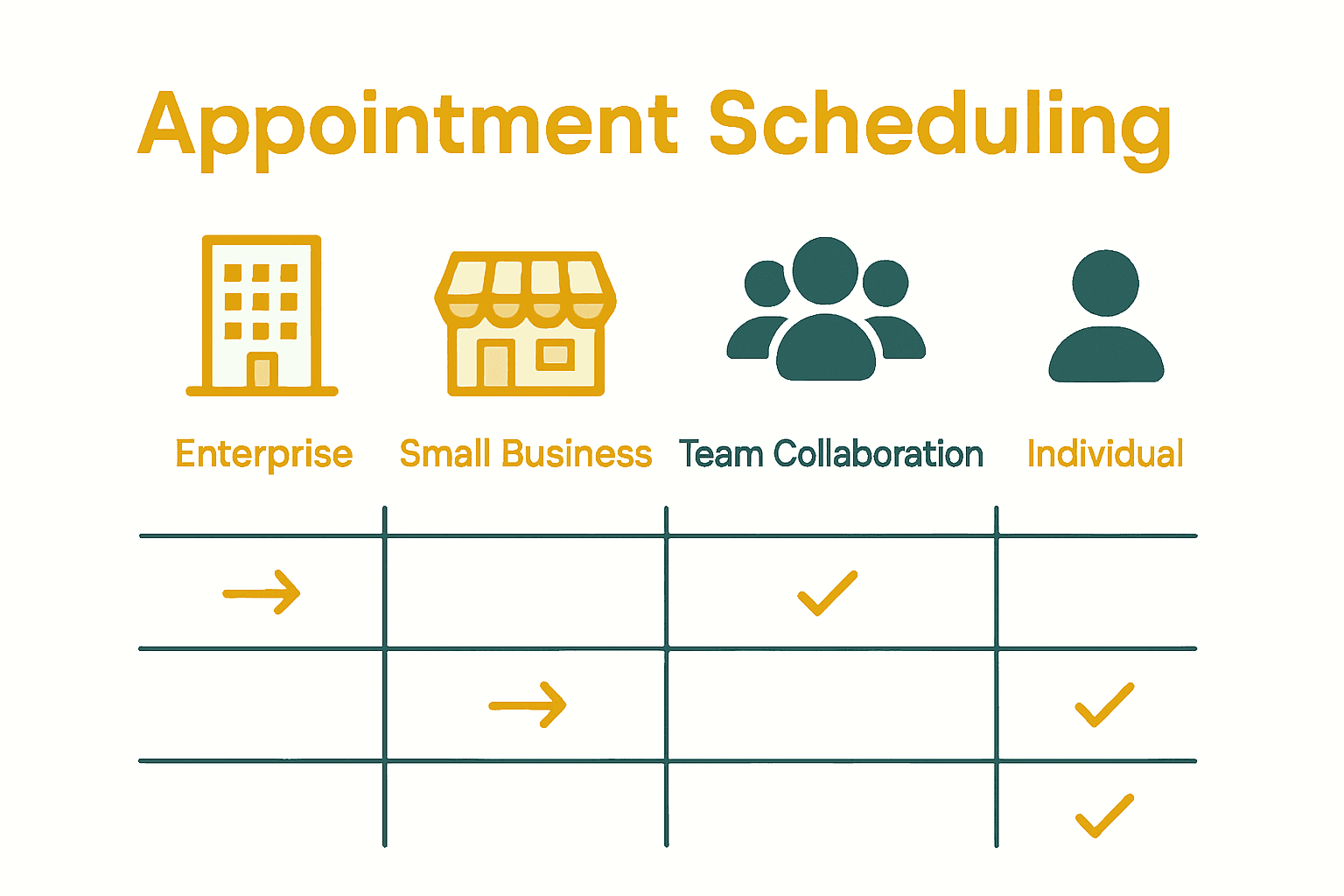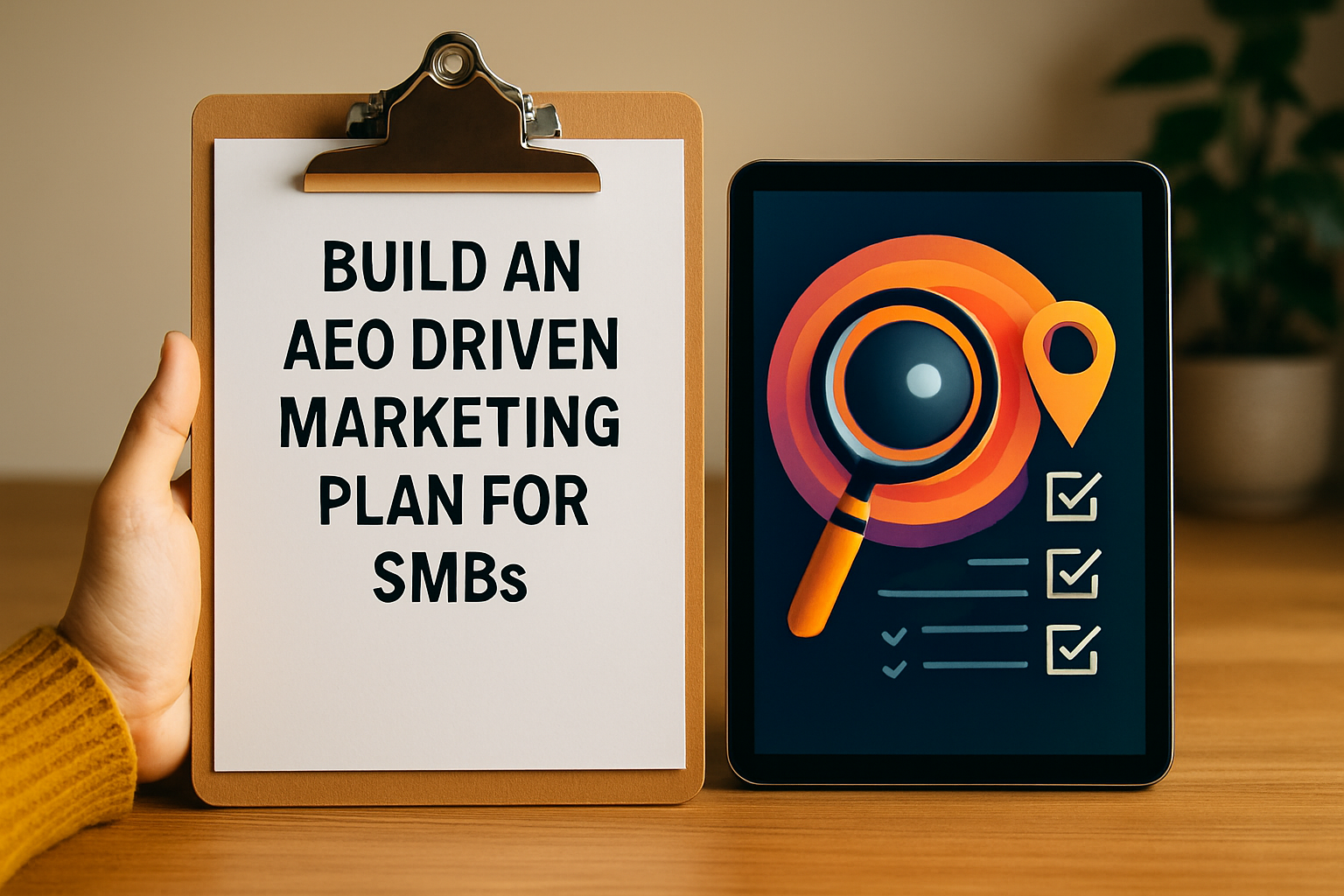Complete Guide to Defining Appointment Scheduling

Did you know that businesses lose an estimated 20 percent of their potential revenue to inefficient appointment scheduling each year? How appointments are managed shapes client satisfaction, staff productivity, and bottom-line results. With powerful new platforms and smarter scheduling methods now available, understanding the real principles and options behind appointment scheduling can help you streamline operations and create smoother, more reliable experiences for everyone.
Key Takeaways
| Point | Details |
|---|---|
| Effective Appointment Scheduling | Transforming chaotic time management into a structured system enhances provider-client interactions and operational efficiency. |
| Types of Scheduling Systems | Different scheduling solutions, such as enterprise systems and small business tools, cater to various operational needs and market segments. |
| Digital Transformation | Digital appointment scheduling enables seamless client interactions through real-time availability tracking and automated confirmations. |
| Challenges to Address | Small businesses must be aware of integration issues and user experience barriers to maximize the effectiveness of scheduling systems. |
Table of Contents
- Defining Appointment Scheduling And Its Core Principles
- Types Of Appointment Scheduling Systems Compared
- How Digital Appointment Scheduling Works
- Benefits And Key Features For Small Businesses
- Common Challenges And Pitfalls To Avoid
Defining Appointment Scheduling And Its Core Principles
Appointment scheduling represents a strategic process of systematically organizing and allocating time slots for service interactions, client meetings, and professional engagements. At its core, scheduling transforms chaotic time management into a structured system that optimizes both provider and client experiences. According to research from arXiv queueing theory studies, effective scheduling can be modeled as a sophisticated system balancing multiple operational variables.
The fundamental principles of appointment scheduling revolve around three critical dimensions: time efficiency, resource optimization, and client satisfaction. Research demonstrates that sophisticated scheduling approaches can minimize multiple friction points:
- Reducing provider travel times
- Minimizing client waiting periods
- Balancing operational idle times
- Creating predictable service delivery windows
According to an academic study examining mobile service provider logistics, scheduling is not merely about filling calendar slots but creating an intricate dance of operational efficiency. As research from arXiv integrated routing studies indicates, optimal scheduling requires understanding complex interactions between provider mobility, client preferences, and time management constraints.
Successful appointment scheduling transcends simple calendar management. It represents a strategic approach to transforming time into a valuable, organized resource that respects both service provider capabilities and client expectations. By implementing systematic scheduling principles, businesses can dramatically improve operational workflows, reduce administrative overhead, and create more predictable, satisfying service experiences.
Types Of Appointment Scheduling Systems Compared
Appointment scheduling systems have evolved dramatically, offering businesses diverse solutions tailored to specific operational needs and industry requirements. According to commercial research comparing scheduling tools, modern scheduling platforms can be strategically categorized based on their unique capabilities and target markets.
Key Scheduling System Categories
Industry-Specific Systems represent specialized solutions designed for targeted professional environments:
- Healthcare/Medical: HIPAA-compliant platforms with patient management features
- Beauty/Wellness: Tools like Fresha with service-specific booking capabilities
- Fitness/Spa: Platforms such as Vagaro offering integrated scheduling and client tracking
- Professional Services: Systems supporting consultants, coaches, and small team collaborations
According to research from vcita, different scheduling systems offer unique advantages:
Here’s a comparison of key appointment scheduling system types and their main features:
| System Type | Typical Features | Best For |
|---|---|---|
| Enterprise Solutions | Advanced integration Custom workflows Analytics/reporting |
Large organizations |
| Small Business Tools | Easy setup Basic automation Affordable pricing |
SMEs and solo providers |
| Team Collaboration Platforms | Shared calendars Multiple users Task coordination |
Small teams or firms |
| Individual Professional Systems | Personalized scheduling Client messaging Simple booking |
Consultants Freelancers |
- Enterprise Solutions: Complex systems with advanced integration capabilities
- Small Business Tools: Simple, user-friendly interfaces with basic automation
- Team Collaboration Platforms: Shared calendaring with multiple user management
- Individual Professional Systems: Personalized scheduling with client communication features
The most effective appointment scheduling systems transcend mere calendar management. They integrate communication tools, provide automated reminders, support multiple booking channels, and offer real-time availability tracking.

By selecting a system aligned with specific business requirements, organizations can transform scheduling from a logistical challenge into a strategic operational advantage.

How Digital Appointment Scheduling Works
Digital appointment scheduling transforms traditional booking processes by leveraging technology to create seamless, real-time interaction between service providers and clients. According to research on medical practice management software, these systems integrate multiple functions beyond simple calendar management, enabling comprehensive workflow automation across various industries.
Core Technological Components
Digital scheduling systems typically operate through interconnected technological mechanisms:
- Real-time Availability Tracking: Dynamically updates open time slots
- Automated Confirmation Systems: Sends instant notifications and reminders
- Client Self-Service Interfaces: Allows direct booking without manual intervention
- Integration Capabilities: Connects with existing calendar and communication platforms
Take Zocdoc’s appointment booking platform as an example. Users can search for providers, view detailed availability, and complete bookings through an intuitive digital interface. The system seamlessly manages provider calendars, patient information, and booking workflows without manual coordination.
The underlying infrastructure of digital scheduling platforms combines cloud computing, robust database management, and real-time synchronization technologies. By eliminating traditional phone-based booking constraints, these systems offer unprecedented flexibility.
Clients gain 24/7 booking capabilities, while service providers optimize their time management, reduce administrative overhead, and create more predictable operational rhythms.
Benefits And Key Features For Small Businesses
Digital appointment scheduling transforms how small businesses manage client interactions, offering powerful tools to streamline operations and enhance customer experience. According to research from Vizitor, these systems provide comprehensive advantages that go far beyond simple booking management.
Key Operational Benefits
Small businesses gain significant advantages through digital scheduling platforms:
- 24/7 Customer Access: Clients can book appointments anytime, anywhere
- Automated Reminders: Reduces no-shows and last-minute cancellations
- Error Reduction: Eliminates double-booking and scheduling conflicts
- Revenue Optimization: Maximizes service capacity and potential upselling opportunities
According to Small Business Trends research, online schedulers like vCita enable businesses to create seamless booking experiences across multiple platforms. These systems integrate client communication channels, allowing scheduling through websites, mobile apps, and social media interfaces.
The most powerful scheduling solutions offer more than just booking functionality. They provide comprehensive business intelligence, track client interactions, generate performance reports, and create a unified communication ecosystem. By implementing these intelligent systems, small businesses can dramatically reduce administrative overhead, improve customer satisfaction, and create more predictable, efficient operational workflows.
Common Challenges And Pitfalls To Avoid
Appointment scheduling systems can become complex operational challenges when not implemented strategically. According to research from Convin, businesses frequently encounter critical technological and operational pitfalls that can undermine their scheduling effectiveness.
Key Scheduling Challenges
The most prevalent challenges small businesses face include:
- Technical Integration Issues: Difficulty synchronizing with existing CRM systems
- User Experience Barriers: Overly complex interfaces deterring client bookings
- Insufficient Personalization: One-size-fits-all approaches that don’t meet specific business needs
- Mobile Optimization Gaps: Poor performance on smartphones and tablets
According to ProLyncs research on scheduling mistakes, small businesses often struggle with fundamental operational errors:
- Neglecting online booking capabilities
- Relying on outdated manual tracking methods
- Failing to implement robust confirmation protocols
- Lacking clear cancellation and no-show policies
Successful appointment scheduling requires a holistic approach that balances technological capability with user-friendly design. By anticipating potential challenges and proactively developing comprehensive strategies, businesses can transform scheduling from a potential friction point into a smooth, efficient client engagement mechanism. The key is continuous refinement, regular system audits, and a commitment to understanding evolving client interaction preferences.
Ready to Turn Your Scheduling Frustrations into Seamless Success?
If manual scheduling, double bookings, and missed appointments keep hurting your productivity, you’re not alone. The guide you just read highlights the confusion and inefficiency many businesses face every day. Juggling multiple tools and outdated tracking eats away at your time and often leads to unhappy clients. You deserve a better solution that unites calendar management, automated confirmations, and real-time booking into one smooth process, just like you learned about in the article.

Discover how Authority Echo can upgrade your entire workflow by combining appointment scheduling, automated reminders, and payment processing within a single platform. Quit wasting hours patching together different apps. Take control of your time and client experience today. Visit our homepage now and see how effortless scheduling leads to faster growth and stronger relationships. Unlock your full potential before another client slips through the cracks.
Frequently Asked Questions
What is appointment scheduling?
Appointment scheduling is a strategic process that organizes and allocates time slots for service interactions, client meetings, and professional engagements, optimizing both provider and client experiences.
What are the key principles of appointment scheduling?
The core principles of appointment scheduling include time efficiency, resource optimization, and client satisfaction, aiming to minimize provider travel times, reduce client waiting periods, and balance operational idle times.
What types of appointment scheduling systems are available?
Appointment scheduling systems can be categorized into several types: enterprise solutions for large organizations, small business tools for SMEs, team collaboration platforms for small teams, and individual professional systems for consultants and freelancers.
How can digital appointment scheduling benefit small businesses?
Digital appointment scheduling benefits small businesses by providing 24/7 customer access, automated reminders to reduce no-shows, error reduction to eliminate double-bookings, and revenue optimization by maximizing service capacity and upselling opportunities.




